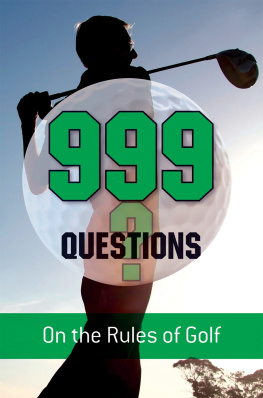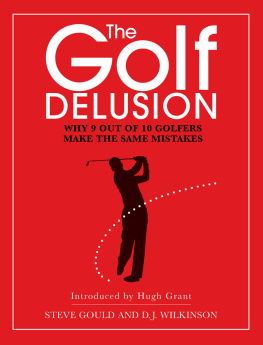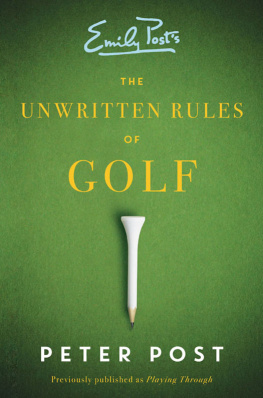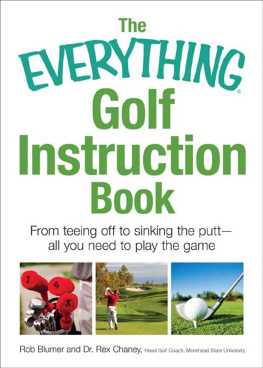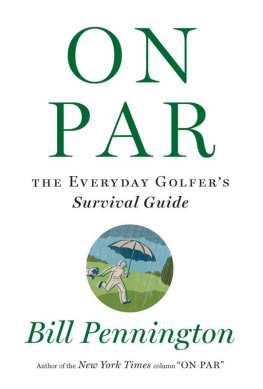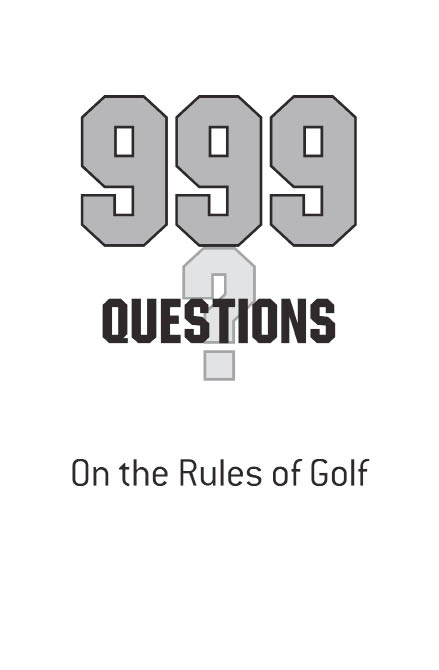Barry Rhodes qualified as a chartered accountant in London, but has since spent over 35 years in various sales & marketing management roles within the information communication technology (ICT) sector. He is an enthusiastic, high handicap golfer who developed an interest, then a fascination, and now an obsession with the Rules of Golf. He is resident in Dublin, Ireland, where he is an active member of Milltown Golf Club.
Barrys relationship with the Rules began in 2000 with his participation in the inter-club Rules of Golf quiz competitions, organised by The Royal & Ancient for Golf Clubs in Great Britain and Ireland. This then led to him writing articles, running quizzes, and delivering presentations on the Rules at a variety of Golf Club and corporate functions. More recently he has been answering questions on the Rules of Golf and writing an occasional web blog, for the St Andrews, Scotland, based web marketing site, www.GolfSwingSecretsRevealed.com. He has his own web blog containing miscellaneous content for anyone who wishes to improve their knowledge and understanding of the Rules of Golf at www.barryrhodes.com.
In March 2008, Barry became the first person to achieve a 100% correct mark on the public Advanced Rules of Golf Course examination, run by the Professional Golfers Association (PGA) in their headquarters at The Belfry, West Midlands, UK.
To Sandy, my love.
True or False?
Q.1
A ball is unfit for play if its surface is scratched or scraped. True or False?
Answer: False. Rule 5-3.
Note: A ball is unfit for play if it is visibly cut, cracked or out of shape. Scratches or scrapes do not render a ball unfit for play.
Q.2
In a four-ball stroke play competition a player may play the whole round without a partner. True or False?
Answer: True. Rule 31-2.
Note: A side may be represented by either partner for all or any part of a stipulated round.
Q.3
A Stableford competition is a form of stroke play. True or False?
Answer: True. Rule 32-1.
Note: Bogey, Par and Stableford competitions are forms of stroke play in which play is against a fixed score at each hole.
Q.4
The penalty for agreeing to waive the operation of any Rule is disqualification. True or False?
Answer: True. Rule 1-3.
Note: Players must not agree to exclude the operation of any Rule or to waive any penalty incurred.
Q.5
A player must stand within the teeing ground to play his tee shot. True or False?
Answer: False. Rule 11-1.
Note: A player may stand outside the teeing ground providing his ball is teed within it.
Q.6
When taking relief from an immovable obstruction a player may not clean his ball. True or False?
Answer: False. Rule 24-1.
Note: The ball may be cleaned when lifted under this Rule.
Q.7
The general penalty for a breach of a Rule in stroke play is one stroke. True or False?
Answer: False. The general penalty in stroke play is two strokes. Rule 3-5.
Note: The general penalty for a breach of Rule in match play is loss of hole.
Q.8
A player may brush aside sand in the area where he is about to drop his ball under the Rules. True or False?
Answer: False. Decision 13-2/11.
Note: A player is not permitted to improve the area in which he is to drop or place a ball by removing sand or loose soil, which are not loose impediments, unless they are on a putting green.
Q.9
A competitor is a player in a match play competition. True or False?
Answer: False. Definition of Competitor.
Note: A competitor is a player in a stroke play competition.
Q.10
A fellow competitor or spectator, may not assist a competitor in removing a large loose impediment. True or False?
Answer: False. Decision 23-1/3.
Note: The player may seek help from anyone to remove a loose impediment, providing that there is no undue delay in play.
Q.11
Time spent in playing a wrong ball is not counted in the five minute period permitted for searching for a ball. True or False?
Answer: True. Definition of Lost Ball.
Q.12
A player who is naturally right-handed may carry a left-handed club to use for shots where she might otherwise have to turn a clubhead over, for example, where her ball is lying against a tree. True or False?
Answer: True. Rule 4-4.
Note: There is nothing in the Rules to prevent a player carrying both left and right-handed clubs, providing they do not start their stipulated round with more than 14 clubs.
Q.13
A ball is in a bunker when any part of it touches the bunker. True or False?
Answer: True. Definition of Bunker.
Q.14
In match play, if a player plays from outside the teeing ground when starting play of a hole her opponent may require the stroke to be cancelled and replayed from within the teeing ground. True or False?
Answer: True. Rule 11-4a.
Note: However, the opponent may also elect to let the stroke stand.
Q.15
A players provisional ball may not be played if their original ball is neither lost nor out of bounds. True or False?
Answer: True. Rule 27-2c.
Note: The player must continue play with the original ball.
Q.16
In match play, if a players ball at rest is moved by an outside agency he loses the hole. True or False?
Answer: False. Rule 18-1.
Note: If a ball at rest is moved by an outside agency, there is no penalty and the ball must be replaced.
Q.17
To assist a player as to the location of a hole on the putting green it is permissible for another player to mark the position of the hole with the grip end of their putter. True or False?
Answer: True. Decision 17-3/6.
Note: A club used in this matter must be treated as a flagstick in applying the Rules.
Q.18
Information such as the position of hazards or the flagstick on a putting green, is advice. True or False?
Answer: False. Definition of Advice.
Note: Information on the Rules, distance or matters of public information such as the location of the flagstick on the putting green, is not advice.

